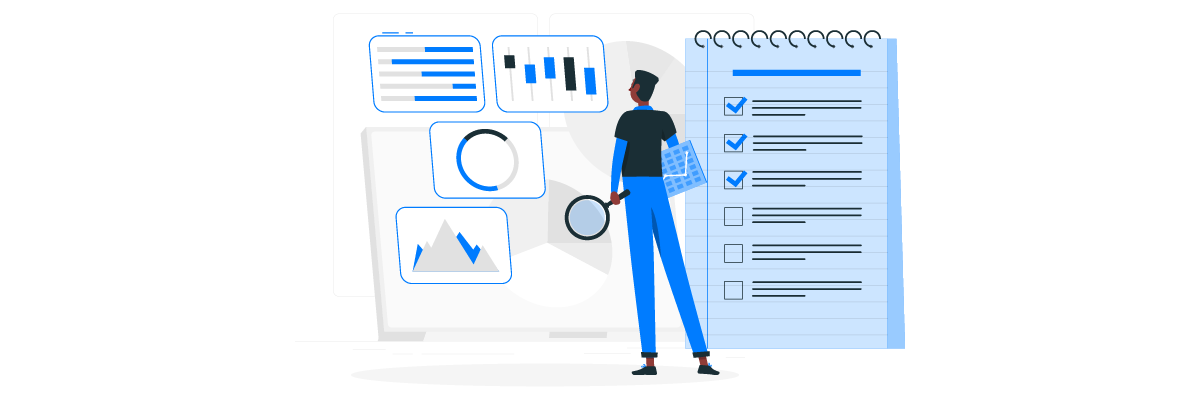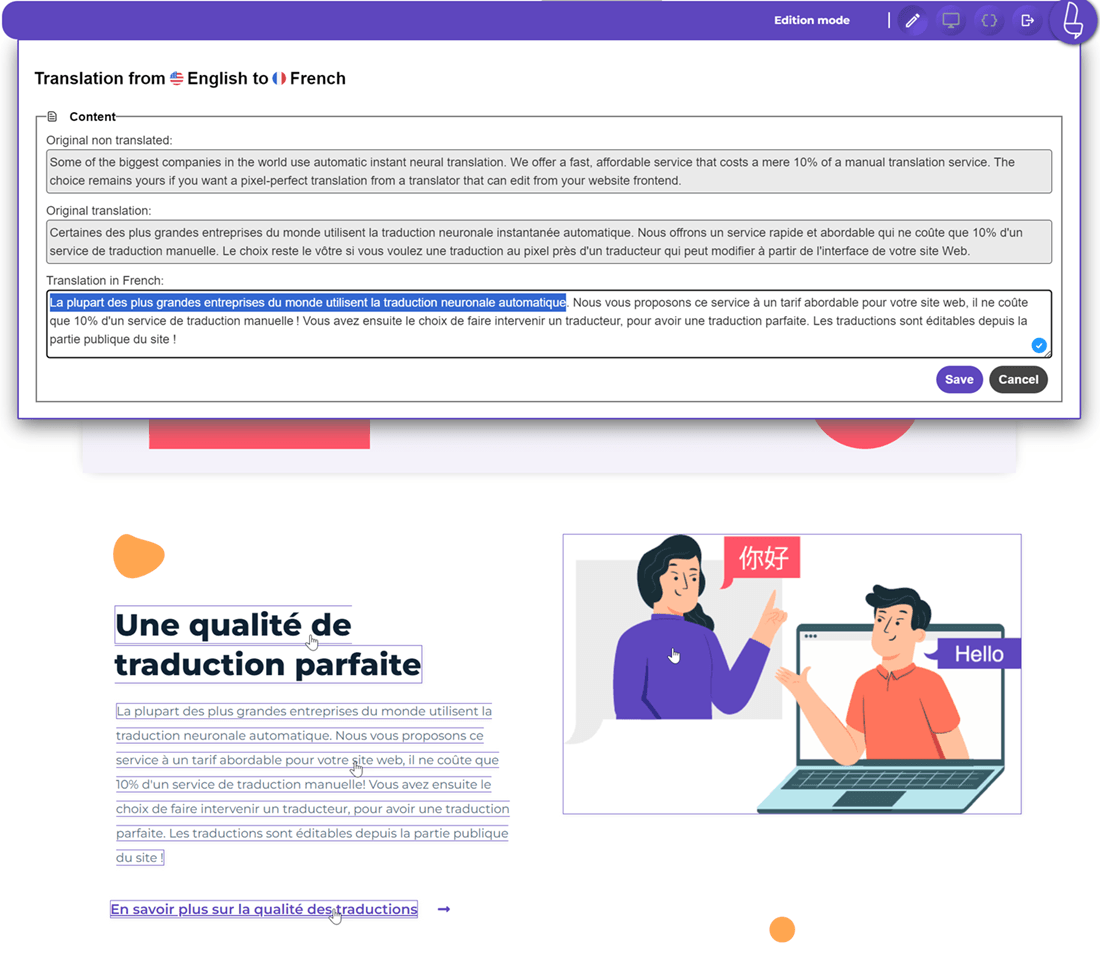A multilingual SEO audit is the key to ensuring your website performs well across different languages and regions. When you manage a multilingual site, you’re optimizing for completely different audiences with unique search habits. Without a proper audit, technical issues, poor translations, or inconsistent indexing can quietly hurt your visibility on Google in each target market.
For web agencies, regular multilingual SEO audits help catch these problems early and ensure every version of a site is fully optimized — from technical setups like hreflang tags and sitemaps, to on-page content and even off-page signals like local backlinks. This article walks you through an actionable checklist to review the full SEO health of multilingual websites. Let’s start!
The importance of regular multilingual SEO audits

When managing a multilingual website, you must ensure everything runs smoothly behind the scenes. From technical structure to translation quality, many factors can affect the SEO performance of each language version of your site. That’s why regular SEO audits are crucial to maintaining your site’s performance in the global market.
If you only focus on the main language version of your site, the other versions might fall behind without you realizing it. For example, your French page might not be indexed by Google due to a minor technical issue like an incorrect hreflang tag or an outdated sitemap.
Routine SEO audits help you identify and fix these issues before significantly impacting your site’s performance. Additionally, user preferences and search engine algorithms vary by country, so regular audits ensure your site remains relevant in each local market.
By conducting regular multilingual SEO audits, you can gain several key benefits, such as.
- Boosting local visibility: Well-optimized content in each language is easier for local users to find via search engines.
- Avoiding content duplication: Audits help ensure each language version has unique SEO structures and tags.
- Fixing hidden technical errors: Like unindexed pages, broken links, or incorrect tags.
- Maintaining translation quality: Audits make detecting irrelevant or culturally inaccurate translations easier.
- Improving the global user experience: With content and site structure tailored to the needs and habits of users in each country.
Technical SEO audit checklist

This section will discuss the most important technical elements to check when conducting an SEO audit for a multilingual site. The main focus is ensuring the site’s basic structure supports optimal visibility and performance across all language versions.
Hreflang tag implementation & validation
The hreflang tag is a small but very important instruction that tells Google which language version is displayed for users from a particular location. For example, you want users in Spain to be directed to the Spanish-language site, while users in Canada are directed to the French version. Without this tag, Google could incorrectly display a version of the site that doesn’t match the user’s language, ruining their experience.
Therefore, to audit hreflang you can implement the following.
- Every page has an hreflang tag that points to all other language versions of that page.
- The implementation is consistent across the site (use the format: hreflang=”x” in <link> tags).
- Validate reciprocity, if page A points to page B, then page B must also point back to A.
- Use tools like Google Search Console and Screaming Frog to help with validation.
To make it clearer, let’s look at a real-life example of a correct hreflang implementation and one that can cause SEO problems. Let’s say you have a home page in English and Italian:
<link rel="alternate" hreflang="en" href="https://example.com/en/" />
<link rel="alternate" hreflang="it" href="https://example.com/it/" />
<link rel="alternate" hreflang="x-default" href="https://example.com/" />
XML sitemap structure and submission

A sitemap is a roadmap that tells search engines about the structure and content of your site. For multilingual sites, you must ensure that the sitemap includes all language versions and has been submitted to Google Search Console. Some things you need to checklist when auditing a sitemap.
- Create a separate sitemap for each language (or one index sitemap that covers all of them).
- Ensure the pages listed are active, accessible, and not blocked by robots.txt.
- Use xhtml:link rel=”alternate” in the XML sitemap to include hreflang.
- Submit the sitemap via Google Search Console for each language property (for example: /en/, /fr/, /id/).
Below is a good sitemap for multilingual SEO, which includes the default English version.

Then this is how it looks when it has been translated

URL structure consistency
The choice of URL structure affects how search engines understand and index multilingual content. There are three main options: subdomains (fr.example.com), subdirectories (example.com/fr/), and URL parameters (example.com?lang=fr). For SEO purposes, subdirectories are recommended because they are easier to manage and retain domain authority.
Unfortunately, many multilingual websites still use a mixed URL structure, or don’t configure it at all. This can confuse Google when trying to understand the relationship between pages in different languages and sometimes lead to duplicate content issues. A clean and consistent URL structure helps search engines. It provides a better user experience, as users can immediately recognize the language of the page just by looking at the URL.
Here are some tips for auditing your website’s URLs:
- Choose one approach and stick to it across all language versions. For example, if you’re using subdirectories, make sure all languages follow that format (example.com/en/, example.com/fr/, etc.).
- Avoid mixing subdomains and subdirectories on the same site. This complicates hreflang mapping and weakens your domain structure.
- Keep URLs clean, readable, and reflective of the target language. For example:
- ✅ example.com/fr/produits
- ❌ example.com/fr/page?id=123
Site speed and performance

Site speed significantly affects SEO and user experience. Even if your multilingual content is well translated, a slow-access site can drive visitors away, triggering a high bounce rate.
For multilingual sites, you must also ensure that the access speed remains stable across all target regions, not just in the server’s home country. For example, your site may be fast to access from Indonesia but very slow if opened from France or Brazil. This would negatively affect the local SEO performance in those regions, as search engines also consider speed based on the location of the accesser.
To help you with your technical evaluation, here are some important performance metrics that you should monitor.
Metric | Description | Ideal Score |
Page Load Time | Total time for the page to fully load. | < 3 seconds |
Time to First Byte (TTFB) | Time until the browser receives the first byte from the server. | <0.8 seconds |
Largest Contentful Paint (LCP) | Time to display the main element (e.g., large image or headline). | < 2.5 seconds |
First Input Delay (FID) | Response time when the user first interacts with the page. | < 100 ms |
Cumulative Layout Shift (CLS) | How much page elements shift during loading. | < 0.1 |
Bounce Rate | Percentage of visitors who leave the page immediately without interaction. | < 40% |
Server Response Time | Time the server takes to respond to the browser request. | 100 – 200 ms |
The more these metrics fall within the ideal range, the better SEO signals are sent to Google, improving user experience across multiple language versions. To audit this, there are a few tips you can use.
- Use PageSpeed Insights or GTmetrix and test from multiple target country locations to determine which language versions are the slowest.
- Optimize images and media, enable lazy loading, and compress static files like CSS and JavaScript.
- Use a CDN (Content Delivery Network) to serve content faster from the server closest to the visitor.
Mobile-friendliness across language versions
Most internet users access websites via mobile devices, so ensuring every language version of your site is truly mobile-friendly is crucial. This means having a responsive design and making sure users feel comfortable reading and navigating your site in their local language on smaller screens. For example, longer translations, special characters like French accents or Japanese kanji, and overlapping UI elements can cause issues if not carefully audited. Here are key points to check for mobile usability across all language versions.
- Layout remains clean and navigation stays clear and easy to use.
- Text size is readable, and buttons have enough space to tap comfortably.
- Fonts properly support language-specific characters (é, ñ, ü, etc.).
Indexation status in Google Search Console
Finally, in the technical audit, it is important to ensure that Google indexes every page in all language versions. If the pages don’t appear in the search engine index, then all your optimization efforts, from content to technical, won’t yield maximum results because users won’t find the pages. Therefore, checking the index status of your pages is a crucial step to ensure that your multilingual site can appear in search results effectively. Here are some audit steps you can take.
- Open Google Search Console and check each language version’s “Coverage” report.
- Use the URL Inspection feature to check the index status of specific pages.
- Ensure no important pages are blocked by robots.txt or use the noindex tag.
On-page SEO audit checklist

After knowing the technical SEO audit, we will get into the on-page SEO part. On-page SEO is about optimizing your pages’ content and HTML source code, ensuring each language version speaks directly to the audience and search engines. From keyword choice to meta tags, URL slugs, and content relevance, every detail matters if you want your site to rank well in multiple languages.
Localized keyword research and targeting
Keyword research audit for multilingual sites goes beyond checking whether you have translated the main keywords. What matters is whether those keywords are relevant and commonly used by the local audience in each language version of your site. In many cases, literal translations cause pages to fail to appear in local search results because they don’t match the terms people use in the target country.
Therefore, during your audit, you should examine the following:
- Are the primary keywords in each language version aligned with the most searched terms locally? Use tools like Google Keyword Planner or SEMrush, set by country or target language, then compare search volumes to verify if your chosen keywords are indeed popular there.
- Are there differences in search intent or informal terms that are more commonly used? For example, users in Spain might more often search for “zapatillas de correr” instead of the direct translation “zapatos para correr.”
- Check the SERP results for each keyword on the local version of Google. This can help you understand if your content competes with relevant pages or appears alongside unrelated results.
Pro tip: If you notice a language version of your site has low organic traffic despite being translated, this might signal that the keywords used are not local enough or don’t match how local users search.
With this audit approach, you can identify which keywords need to be replaced or refined to better fit the language, culture, and search behavior of your target local audience.
Optimized meta titles & descriptions

When conducting a multilingual SEO audit, it’s important to review the meta titles and descriptions applied on each language version of your site. Remember, these elements are the first things users see in search results—and if translated literally, they often sound awkward or unappealing to the local audience. Your task during the audit is to ensure every page remains locally relevant and enticing to click. Here’s what you need to check during the audit:
- Make sure the meta title includes local keywords and still reads naturally in the target language. You can use tools like Google SERP preview or SEO plugins (such as Rank Math or Yoast) to see how the title and description appear in search results.
- Check if the length meets the standard limits: meta titles should be no longer than 60 characters, and meta descriptions no longer than 160 characters. If too long, titles may get cut off; if too short, they might lack information.
- Verify if the tone matches the target culture. For example, Japanese versions usually prefer a more formal and professional tone, while Spanish or Latin American markets might use a friendlier style.
If your site targets Spain and uses the title:
“Running Shoes – High Quality and Comfortable”
This is not only in English but also may be irrelevant even if translated literally. Instead, try to evaluate whether a more natural version is already in use, such as.
“Zapatos para correr cómodos y duraderos – Compra online”
Translated URL slugs
In a multilingual SEO audit, URLs aren’t just a technicality-they’re an important part of the user experience and a signal to search engines. When conducting an audit, you should review whether the URLs in each language version of the site have been fully translated and optimized, or are still using generic structures, random numbers, or leftovers from the original language versions. URLs that remain in the original language or use product IDs can look unprofessional and confusing to local users.
- You should evaluate several points when auditing URL slugs such as.
- Avoid URLs like example.com/fr/page?id=123 that provide no context at all. Instead, make sure the slug reflects the page’s content and uses local keywords. Example audit comparison:
- ❌ example.com/de/product?id=299
- ✅ example.com/de/kaffeevollautomat
- Avoid using underscores, capital letters, or excess URL parameters. Use hyphens (-) to separate words and keep the slug concise e.g. an example of a correct URL would be this /es/zapatos-deportivos
- Check that the URL structure is consistent across all language versions. For example, if the /en/product-name structure is used for English, then make sure /fr/nom-du-produit is used in the French version instead of mixing /en with French content.
Heading tag usage and localization
When auditing multilingual sites, the heading structure (H1, H2, H3, etc.) is an important point that is often overlooked. Headings are not just a design element-they help users quickly understand the content of a page and also provide important signals to search engines about the structure and topic of the content. Therefore, you need to ensure that the use of headings in each language version is neat, relevant, and well-localized. When conducting a heading audit, check the following.
- H1 should ideally be used only once, and represent the core of the page.
- Use H2-H6 in a cascading manner to logically divide sections and sub-sections. This is important for the reading experience and SEO.
- Don’t just translate literally-make sure to keep the language natural and culturally appropriate.
- Check if the headings contain relevant local keywords. If so, make sure they are inserted naturally.
A good heading structure will help readers scan the page quickly and increase the chances of your content appearing in SERP features such as featured snippets. In addition, Google finds it easier to understand the content and intent of multilingual pages with well-organized headings. A heading audit is not about improving your design but about laying the foundation for cross-language content understanding.
Internal linking strategy across languages
An internal linking strategy is key to keeping visitors engaged and helping search engines find all your content. On multilingual sites, make sure that internal links are not only relevant in one language, but also make it easy for users to switch to another language version if they want. For example, when a user is reading an English article about “travel tips,” provide a link that is still relevant to the topic. This can improve user experience and lower bounce rates. In addition, the anchor text should also be translated and relevant to the target language to avoid confusion.
When implementing internal linking across different language versions, consider the user journey and how content connects meaningfully between languages. Links should maintain topical relevance while respecting cultural context and local search behavior patterns. The following are some internal linking checklists that you need to look out for when conducting an audit.
- Use clear and descriptive anchor text in each target language
- Link to and from important pages in all language versions
- Connect related content within and between language versions
- Limit the number of links per page to maintain focus and usability
- Link from high-authority pages to help distribute page authority
- Use dofollow links for internal links (avoid nofollow unless necessary)
- Keep anchor text concise and under 16 words maximum
Image alt text translation

In multilingual SEO audits, alt text or alternative text for images is often overlooked, even though it’s crucial for two main reasons: accessibility and image SEO. Alt text helps visually impaired users understand visual content through screen readers and also provides additional signals to search engines about the image’s context. When auditing, you need to ensure that alt text in each language version is correctly translated and locally relevant, not just copied from the original version.
For example, if your English version uses the alt text “running shoes on grass,” the German version should be naturally translated as “Laufschuhe auf Gras.” This context-appropriate translation is more user-friendly and remains SEO-optimized.
Here are the key points to check during your alt text audit:
- It is translated into the target language, not left in the original language
- It naturally contains relevant local keywords (without keyword stuffing)
- It clearly and concisely describes the image, with a maximum of 125 characters
- It does not include excessive or purely decorative information (e.g., “cool picture” or “logo” without description)
- It enhances the page context rather than simply repeating surrounding text
Well-optimized alt text can boost your image visibility in local search results while making your site more inclusive and user-friendly. So, don’t underestimate this part of the audit—especially if you rely heavily on images to support your content.
Content quality and cultural relevance
When conducting a multilingual content audit, you’re assessing whether the text has been translated and checking if the content remains relevant, accurate, and appropriate for the local cultural context. This audit involves evaluating existing content both in terms of information quality and the suitability of language style for the target audience. One of the first things to check is whether your content is still up-to-date—for example, an article titled “Best Products 2024” should be updated or revised when 2025 arrives to maintain trust from users and search engines.
The audit should also evaluate whether the content is sufficiently in-depth, not too generic, and whether it uses examples or terms that relate to the local culture. Sometimes, overly literal translations can make foreign readers feel disconnected or confused about the context. Important aspects to consider when auditing content quality and relevance include:
- Check dates and references that may have expired. For example, “Latest SEO Trends in 2022” should be revised or removed if it is outdated.
- Review whether the language style and tone fit the local market. A formal style may suit the Japanese market, while a casual tone might be more effective for Brazilian or Indonesian audiences.
- Evaluate visuals and examples, such as whether images, illustrations, or stories reflect local culture. For instance, winter references may not be relevant for tropical countries.
High-quality content that aligns with local culture will feel more authentic and trusted by users. This is not just about ranking on Google, but about building strong relationships with readers in each market. Regular content audits—especially for pages that drive high traffic—will help maintain your multilingual site’s relevance and long-term SEO performance.
Off-page SEO audit checklist

After checking the internal aspects of your multilingual site, the next step is to evaluate the external factors through an off-page SEO audit. Off-page SEO includes all activities outside the website that affect search engine rankings, such as backlinks, brand reputation, and presence in local directories. In the context of multilingual SEO, this audit cannot just be done globally-you need to look at how off-page SEO performs in each specific local market.
Here are the important elements you need to check when conducting an off-page SEO audit for multilingual sites:
Local backlink profile
Backlinks are still one of the most important signals in SEO. But in multilingual SEO, it’s not just the number of backlinks that counts-the local origin and relevance of the backlinks also matters a lot. When conducting an audit, you need to assess whether each language version of your site is getting backlinks from authoritative local sites.
Things you can check in the audit:
- If you have a French version of your site, check if it gets backlinks from news sites, blogs, or institutions in the French-speaking region
- Check if there are backlinks from trusted local directories or communities, not just from spam blogs.
- Make sure the quality of the backlink anchor text uses local keywords or brand names naturally.
If it turns out that many backlinks come from just one country (for example Indonesia), while you have versions of your site in 5 other languages, then it’s a signal that your backlink distribution is still uneven.
Brand mentions in target languages
Apart from backlinks, brand mentions without links can also give positive signals to Google, especially if they are mentioned in a relevant context. In an audit, you need to check if your brand is mentioned organically in various languages outside the official website. Some things to look out for during the audit:
- Is your brand mentioned in local forums, news articles, or blogs?
- Are the mentions in the language of your target market? For example: “Zapatos de [Brand]” in Spanish.
- Is the context of the mention positive and reflects the brand’s good reputation?
Local business listings and directories

For sites with a local purpose, a presence in local business directories or regional listings is essential. This not only helps people find your business, but also strengthens local signals to search engines. In an audit, you need to ensure that each language version has a listing that matches its target geographic location. Therefore, during a website audit, there are a few things you should check.
- Make sure your business is listed on Google Business Profile for each target region.
- Make sure your website appears on local directories such as Yelp (for the US), Hotfrog (for Asia), or PagesJaunes (for France).
- Check that the NAP (Name, Address, Phone Number) information is consistent across all directories and language versions.
Inconsistent listings or those not available in the target language can lower your business credibility in the eyes of search engines. Make sure there is also a link to the right local version of the site in each listing.
Recommended tools for multilingual SEO audits

After understanding the different types of SEO audits for multilingual sites – from technical, on-page, to off-page SEO aspects – it’s time to learn some of the best tools to help you conduct audits effectively. These tools make the analysis process easier and ensure that you get relevant data according to the language version and target location. Below are the recommended tools, complete with their functions based on the types of audits we’ve discussed.
Google Search Console
Google Search Console is essential in technical SEO audits because it allows you to verify the index status of pages across all language versions, submit language-specific sitemaps, and identify errors related to hreflang tags. Additionally, you can check how pages in a particular language appear in search results, including the performance of meta titles and descriptions. Suitable for auditing.
- Technical SEO: Hreflang validation, XML sitemap submission, indexation status.
- On-page SEO: Checking page CTR via search appearance based on language versions.
SEMrush
SEMrush supports keyword analysis by location and language, enabling you to evaluate whether the keywords used align with local searches. This tool is also useful for analyzing local competitors and benchmarking content across different language versions. Suitable for auditing.
- On-page SEO: Localized keyword targeting, meta titles & descriptions.
- Off-page SEO: Backlink analysis and authority based on target country/language.
Screaming Frog
This tool is highly effective for locally crawling multilingual sites. Screaming Frog can validate hreflang tags between pages, check URL structure consistency across languages, and ensure all pages have proper titles and descriptions. You can also identify pages using URL slugs in a language that doesn’t match the content version. Suitable for auditing.
- Technical SEO: Hreflang implementation, URL structure consistency, mobile-friendliness.
- On-page SEO: Meta tag optimization, translated URL slugs.
PageSpeed Insights
This tool provides technical performance reports per page—including multilingual pages. It’s ideal for identifying slow elements such as images or fonts specific to certain languages and offers direct technical recommendations for performance improvements. Therefore, it’s suitable for auditing technical SEO factors like site speed, LCP, FID, CLS, and TTFB.
Using Linguise in the SEO audit process

If you manage a multilingual website, the SEO audit process is not to be taken lightly. Each language version of your site needs to be optimized to the same standards for consistent visibility on search engines. For this reason, it is important to choose a translation tool that is not only capable of automatically translating content, but also supports the SEO audit process.
One solution that stands out in this regard is Linguise, which not only translates accurately, but also comes with features that make it easy to monitor and optimize multilingual content.
Identify automatically translated elements
In a multilingual SEO audit, it’s important to know if key elements such as URLs, meta descriptions, title tags, and image alt text are translated accurately and in context. Linguise supports this with automatic translation that covers all page elements, not just the main text. With this feature, you can drill down and identify which content is automatically translated-including the often overlooked yet crucial URL slug for SEO.
In addition, Linguise allows you to control translation results through its dashboard. This is especially useful when conducting audits, as you can instantly assess whether each page description in another language retains its SEO value and remains relevant to the original topic.
Fix translations with the live editor
One of Linguise’s flagship features that is particularly helpful in auditing is the Live Editor. This feature lets you edit the translation directly on the page, with full visual context. This is useful not only for correcting translation errors but also for adjusting the language style to make it sound more natural, relevant, and in line with local audience expectations.
In SEO practice, content readability has a huge impact on engagement rate and dwell time, which are often used in page performance audits. With Live Editor, you can ensure that every page in multiple languages conveys the same strong and clear message as the original version- in other words, you are auditing and optimizing in real time.
Conclusion
A multilingual SEO audit is an important step to ensure that each language version of your site performs optimally on search engines. With smart features like Linguise’s automatic translation element identification and Live Editor, the audit process becomes more efficient and accurate. You cannot only monitor the quality of translated content but also improve it in a visual context to keep it relevant and appealing to users in different countries.
Having the right tools in place for a multilingual SEO audit can be the difference between a simply translated site and one globally optimized. So, you’re serious about growing your site’s international reach without compromising quality and SEO. In that case, it’s time to try Linguise and experience the ease of managing a multilingual site more easily.





